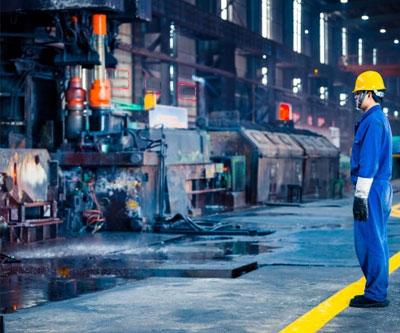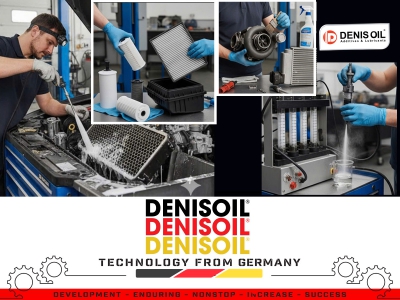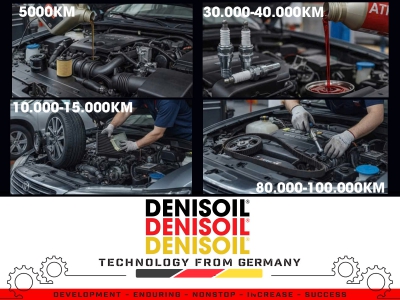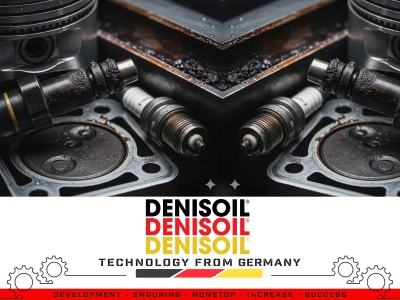Lubrication in Hydraulic Systems – Basic Technical Knowledge
1. Hydraulic System and the Role of Lubrication
Hydraulic systems use hydraulic oil to transmit power, lubricate valves and cylinders, provide cooling, and protect against corrosion.
Hydraulic oil contributes up to 70–80% of system efficiency and durability – selecting the right oil is critical.
A basic hydraulic schematic includes: pump, electric motor, couplings, safety valve, pressure gauge, shut-off valves, valve base, directional control valves, functional valves, oil tank, and accessories. Actuators such as hydraulic cylinders or hydraulic motors are connected to perform the work.
Example: Dual-flow hydraulic system
- At high flow with low load, the system runs at high speed but with low pressure (30–50 bar may be sufficient).
- At low speed with high load (pressing force), pressure is adjusted up to 160–250 bar depending on application.
- An automatic unloading valve is commonly used, controlled remotely by a pilot valve, ensuring smooth switching between low- and high-pressure circuits.
Applications: hydraulic presses, plastic injection molding machines, and other heavy-duty equipment.
Hydraulic control basics
- At start-up, the pump unloads via the open center of the directional valve to the tank.
- To increase pressure, shift the directional valve to load position and adjust the relief valve accordingly.
- Additional pressure-reducing and logic valves can be applied to fine-tune performance.
2. Types of Hydraulic Pumps
- Gear pump: simple, durable, handles medium pressure (up to ~200 bar).
- Vane pump: medium pressure (140–180 bar), requires clean oil, smooth and stable flow.
- Piston pump: high performance, high pressure (250–350 bar, up to 420 bar), sensitive to oil cleanliness.
Quick Reference Table: Pump Type – Pressure – Oil Viscosity – Cleanliness
|
Pump Type
|
Working Pressure
|
Recommended Oil (ISO VG @40°C)
|
Oil Cleanliness (ISO 4406)
|
|
Gear Pump
|
100–200 bar
|
ISO VG 32–68
|
18/16/13
|
|
Vane Pump
|
140–180 bar
|
ISO VG 32–46 (high VI preferred)
|
17/15/12
|
|
Piston Pump
|
250–350 bar (up to 420 bar)
|
ISO VG 46–68 (AW, HVLP)
|
16/14/11
|
Meaning:
- Higher system pressure → cleaner oil & better anti-wear additives required.
- Viscosity grade must match temperature and load.
- ISO 4406: particle count code (lower = cleaner oil).
3. Determining Hydraulic Oil Viscosity
Hydraulic oils are classified by ISO VG (ISO 3448):
- ISO VG 32: cold climates, high-speed systems.
- ISO VG 46: most common, suitable for general industrial systems.
- ISO VG 68: hot climates, heavy loads, high pressure.
Principle:
- Oil too thin → wear due to metal-to-metal contact.
- Oil too thick → poor pumpability, overheating.
4. Types of Hydraulic Oils
- Mineral-based hydraulic oils: most common, cost-effective.
- Fire-resistant fluids (HFDU, HFC): for steel mills, mining, aerospace.
- Synthetic hydraulic oils: excellent thermal & oxidation stability, long service life.
- Biodegradable (environmentally friendly) oils: used in agriculture, marine, fisheries.
5. Hydraulic Oil Cleanliness
Cleanliness is measured by ISO 4406 Particle Count Code.
- Gear pump systems: ≥ 18/16/13.
- Piston pump systems: ≥ 16/14/11.
Contaminated oil is the cause of 60–80% of hydraulic system failures.
6. Hydraulic Oil Quality Standards
- ISO 11158: classifies HH, HL, HM, HV, HR.
- DIN 51524:
- Part 1 (HH, HL): basic lubricating oils.
- Part 2 (HLP): anti-wear hydraulic oils.
- Part 3 (HVLP): anti-wear + improved viscosity index (VI).
- Denison HF-0, HF-1, HF-2: piston & vane pump approvals.
- Eaton, Bosch Rexroth approvals: OEM requirements for advanced hydraulic systems.
7. Summary
Hydraulic systems require oils in the range ISO VG 32–68 and compliant with standards (DIN 51524, ISO 11158).
- The more advanced the system, the cleaner the oil required (ISO 4406).
- Hydraulic oil not only transmits power but also lubricates, cools, and protects equipment.
- Choosing the wrong oil = reduced lifespan of pumps, cylinders, valves → higher maintenance cost.
 Tiếng Việt
Tiếng Việt
 Chinese
Chinese
 English
English







